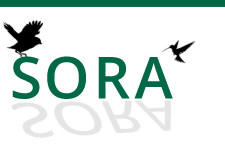A Note on the Food of the Western Robin
Online Full Text
In front of the Biological Station building at Flathead Lake, Montana, a small spring seeps into the lake, making a damp spot in the sand of the lake shore. Here, in tbe month of July swarms of butterflies congregate to drink. The butterflies are principally of two species, papilio rutulua, a large yellow and black one, and Papilio eurymedon, an equally large one in cream color and black. These butterflies became so absorbed in their drinking that they could be easily approached and sometimes picked up in the fingers. One day, I was much amused to notice that a Robin (Planesticus migratorius propinquus) took advantage of this and found them a ready source of food supply. The bird would approach and watch until one fluttered its wings, and then would seize it and swallow it wings and all. I watched it for some time, and noticed that the yellow butterflies were the only ones eaten, although the others outnumbered them almost three to one. Whether the brighter color attracted the bird to these, or the others were distasteful, cannot be said with certainty, but I believe the former to be the case. A chipmunk, which also fed on these butterflies, caught and ate both species, carrying them to the shelter of a log, where it discarded the wings, leaving them in a large heap.
New Haven, Connecticut
Creative Commons License
Recommended Citation
Saunders, Aretas A.
(1916)
"A Note on the Food of the Western Robin,"
Condor: Vol. 18
:
Iss.
2
, Article 13.
Available at:
https://digitalcommons.usf.edu/condor/vol18/iss2/13

